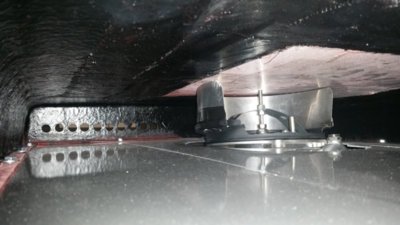Mike Gaines
Well-Known Member
- Local time
- 9:56 PM
- Joined
- Apr 17, 2014
- Messages
- 2,098
- Reaction score
- 4,296
- Location
- Ahwahnee, (Fresno) California
---
Never tried reducing the hood opening. Being the first year for both the car and myself, the hood opening was not even a thought. It was obvious that the scoop was grabbing huge air though, most noticeable towards the end of the pass.
I am going to figure out how to make my scoop width opening smaller.
Doesn't need to be that wide.
I needed the 5.25 inch HEIGHT to allow room for my dominator and very tall INDY intake and 1" open spacer....but...I don't need the width...I drilled several 1/2 inch holes in the rear corners of the scoop to let air pass thru the scoop on each side of the carb.
I did run my fastest ET ever (10.158) with this scoop the way it is configured now with the big wide opening.
Also I video all the runs with my helmet mounted go pro and did not see the scoop or hood wanting to lift at 131+mph..but if it catches less air I might go 10.157...lol

PS: If you look above the carb you will see where I installed a 18" square sheet of aluminum so in case the motor backfired and had a little fire going in the carb it would not allow the flame to hit the underside of the fiberglass scoop directly
Last edited:

















